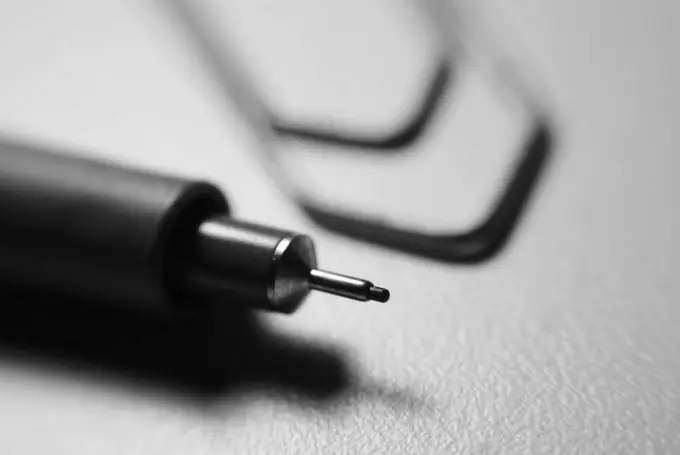If you want to make a graphic drawing, you do not have to take a pencil and give up paints. This is not the difference between painting and graphics. The main thing is how you will use the resources of the material, be it felt-tip pens or watercolors.

Instructions
Step 1
Select paper for the drawing. In graphics, the color and texture of the material are one of the means of expression. A space not filled with a drawing will be perceived as part of it. The texture of the paper - smooth, fleecy, rough - affects not only the overall composition of the drawing, but also the character of the stroke. If a pencil or charcoal lies flat on a smooth material, then the textured line will be more "loose".
Step 2
Sketch the plot or items. Determine the best composition and shape for all objects. Try to use a thin, hard pencil to keep the ball line as light as possible. It is advisable to minimize the use of an eraser.
Step 3
Select the material to be used for the drawing. These can be simple or colored pencils, gel and capillary pens, felt-tip pens, charcoal, sanguine, etc. They are most convenient for drawing contour lines, points and applying hatching. The thickness and color saturation of the outline should vary. Make it wider and darker as the subject or part of it gets closer to the foreground.
Step 4
When hatching, pay attention to the direction of the stroke, its shape and length. The direction and shape should follow the shape of the object. In order to "collect" unidirectional lines into a single whole, you can overlay a hatch layer at an angle to the previous one. By changing the distance between strokes, you can convey different textures and even the weight of objects. Sparse shading will make the subject airy, light, translucent. Gradient shading will allow you to show shape and volume.
Step 5
Instead of or together with pencils, markers, pens, you can use paint - watercolor, gouache, acrylic. It is used to create spots, that is, solid fills that create flat surfaces. In this case, work out the shape of such a spot, its clarity, pay attention to its contrast with the color of the paper.
Step 6
In graphic drawing, in contrast to painting, decorativeness is important. Any image in this technique is conditional. You can draw in detail the subject or character in the foreground, and leave the background blank, but the viewer will still understand that the white sheet is sky, water or earth. Incompleteness, conciseness or even stinginess of a drawing can become its positive sides. To achieve this result, maintain integrity and expressiveness in your work.






